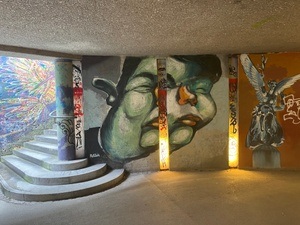München Displaced. Heimatlos nach 1945
In the organizer's words:
Educational institutions such as the Russian-language high school in the Schleißheim camp, the international UNRRA University in the German Museum, the Ukrainian Free University or the Tolstoy Library are presented. Although all displaced persons were to return to their countries of origin or later emigrate to other countries, thousands remained in Munich. The family biographies of Ukrainian, Armenian, Kalmyk and Russian Munich residents are presented on the basis of the Ludwigsfeld housing estate. By giving a face to the very heterogeneous displaced persons from Eastern Europe through photographs, audio recordings and video interviews and by telling their stories, the exhibition reveals a cultural void of memory. The state of research is expanded by a panorama of around 40 further addresses on Munich's DP history, illustrating the diversity on the one hand and the gaps in research on the other.
The joint inventory of the Jewish Museum Munich -"Munich Displaced. The Remnant of the Rescued" - and the Munich City Museum on the history of the Displaced Persons will open up a new perspective on post-war Munich.
The ticket is valid as a combination ticket for both "Munich Displaced" exhibitions on the same day.













